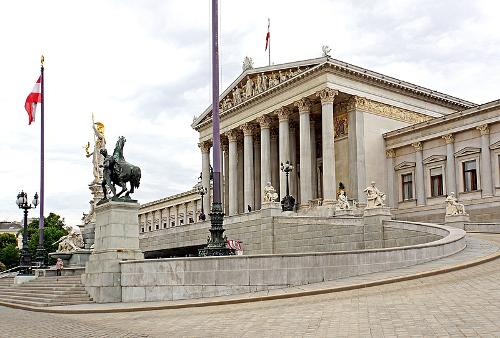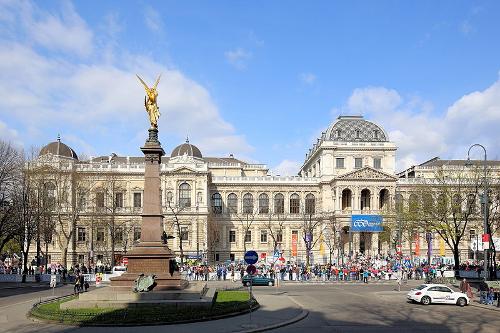AUSTRIA
Society

Society
Cities in AUSTRIA
| Vienna |
Society
State Structure
 Parliament building AustriaPhoto: Dennis Jarvis CC 2.0 Generic no changes made
Parliament building AustriaPhoto: Dennis Jarvis CC 2.0 Generic no changes made
The constitution is based on the constitution of 1920/1929, which came into effect again after the Second World War. Austria's sovereignty and independence are guaranteed in the State Treaty of 1955. According to the constitution, Austria is a federal republic, a federation of nine federal states, the Bundesländer. The Federal Republic is headed by the Federal President, directly elected for a term of six years and eligible for re-election once. The federal government consists of a chancellor, a vice chancellor and ministers. They are appointed by the Federal President and are answerable to the National Council. The national parliament consists of two chambers: the Nationalrat (183 members), the main legislative body. They are elected every four years by universal suffrage by residents aged 19 and over. The Bundesrat (64 members) is elected by the parliaments (Landtage) of the federal states. Each Bundesland has its own parliament, the Landtag. Executive power is exercised by the Landesregierungen. The Landesregierungen consist of a Landeshauptmann, a deputy and a number of Landräte, chosen by the Landtag and responsible to it. Vienna is one of the nine federal states and the city council acts here as Landtag; the Landesregierung is called Stadtsenat in Vienna. The constitution provides for the possibility of a referendum. Citizens can submit bills through the so-called Volksbegehren.
The nine federal states are subdivided into 99 districts and those in 2553 municipalities. For the current political situation see chapter history.
Education
 Main building of the University of Vienna in AustriaPhoto: Bwag CC 4.0 International no changes made
Main building of the University of Vienna in AustriaPhoto: Bwag CC 4.0 International no changes made
From the fourth year, Austrian children are allowed to go to the kindergarten, the Kindergarten. From the age of six, children are of compulsory school age and then go to the Volksschule. After the Volksschule you can choose from three directions. General development schools directly preparing for university education. A four-year Hauptschule that links up with secondary and higher professional education. There are also possibilities to follow lower vocational education.
Sources
Bendien, M. / Midden-Oostenrijk
ANWB media
Europese Unie
Europees Platform voor het Nederlandse Onderwijs
O'Bryan, L. / Oostenrijk
Gottmer
CIA - World Factbook
BBC - Country Profiles
Last updated November 2025Copyright: Team The World of Info